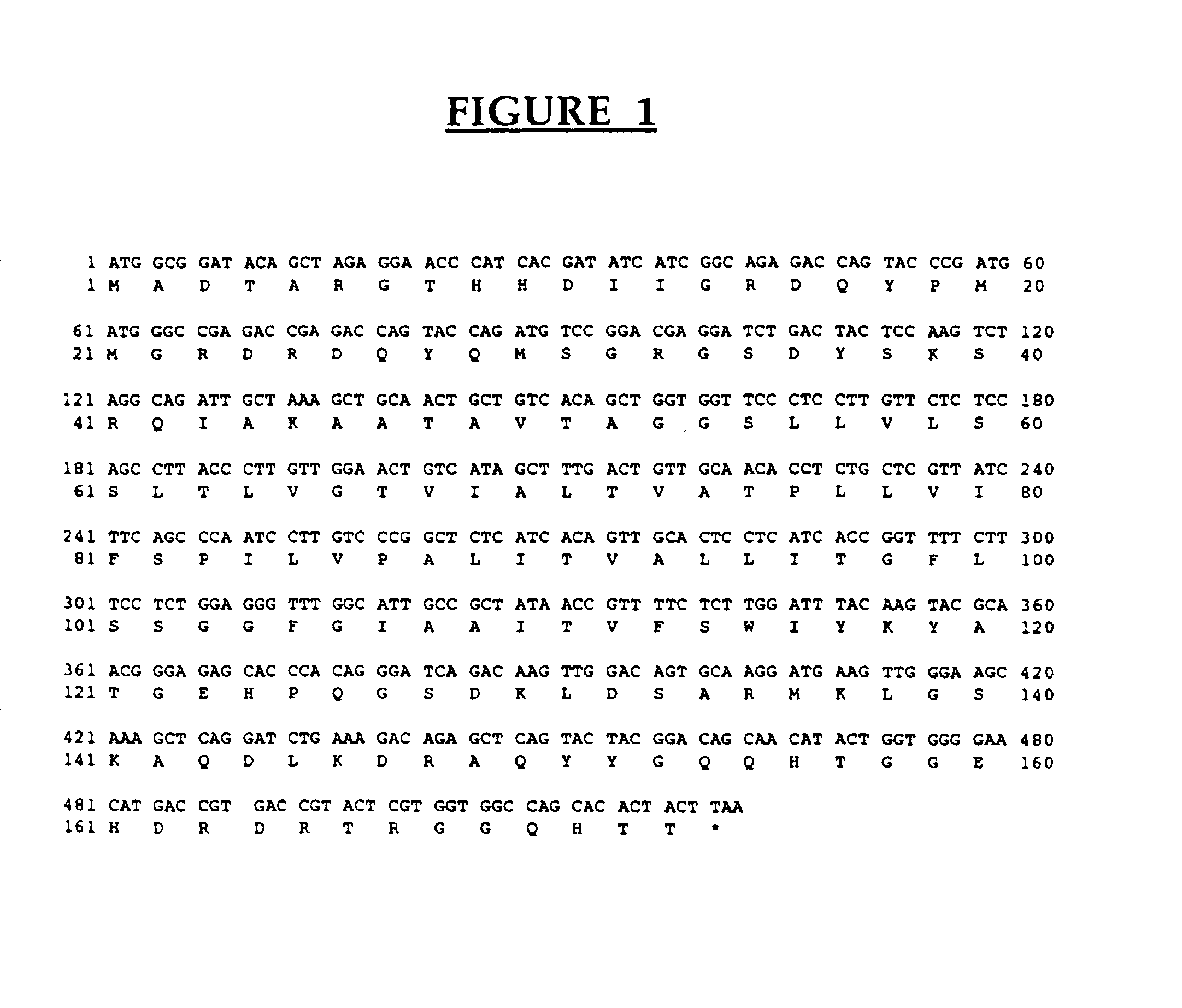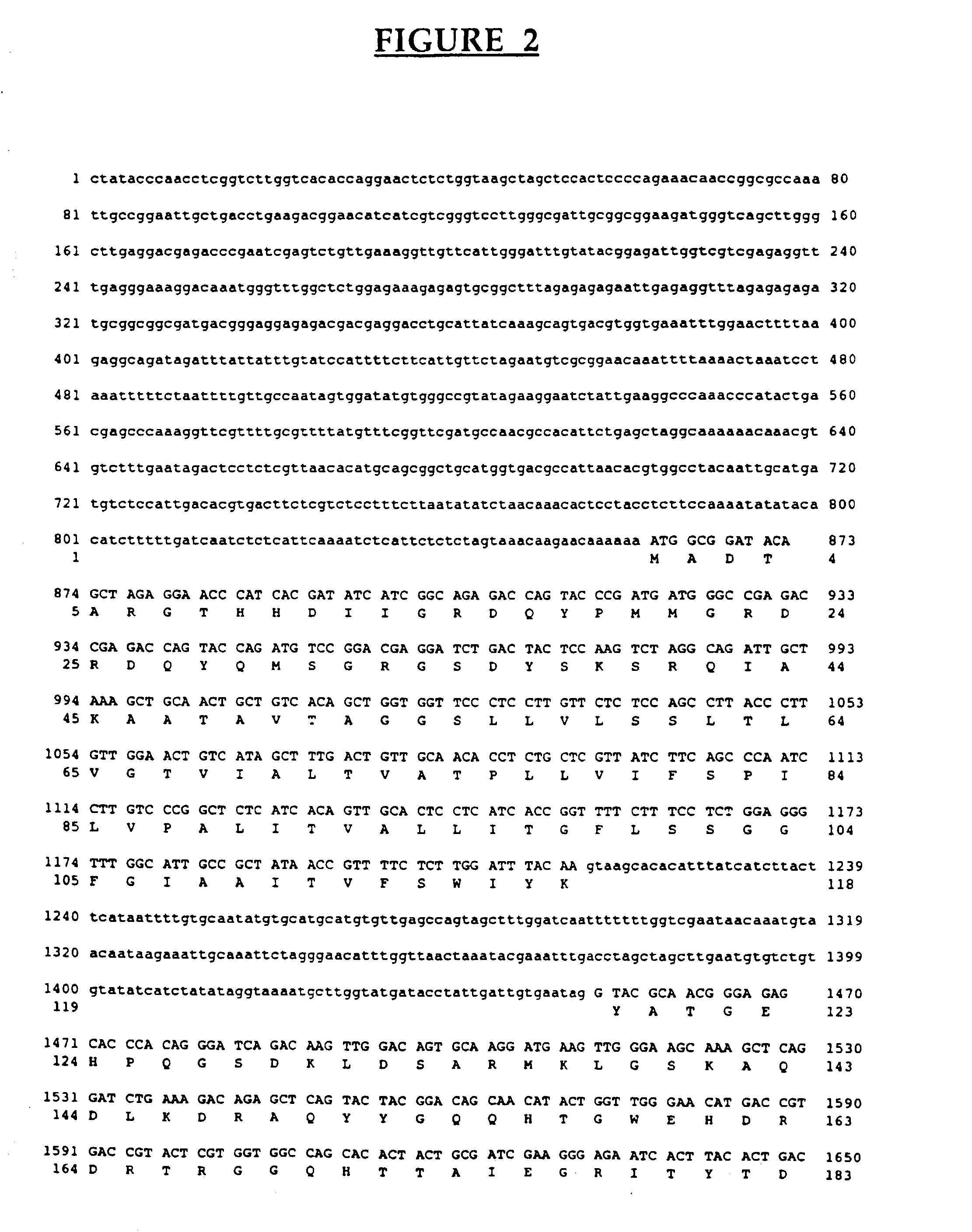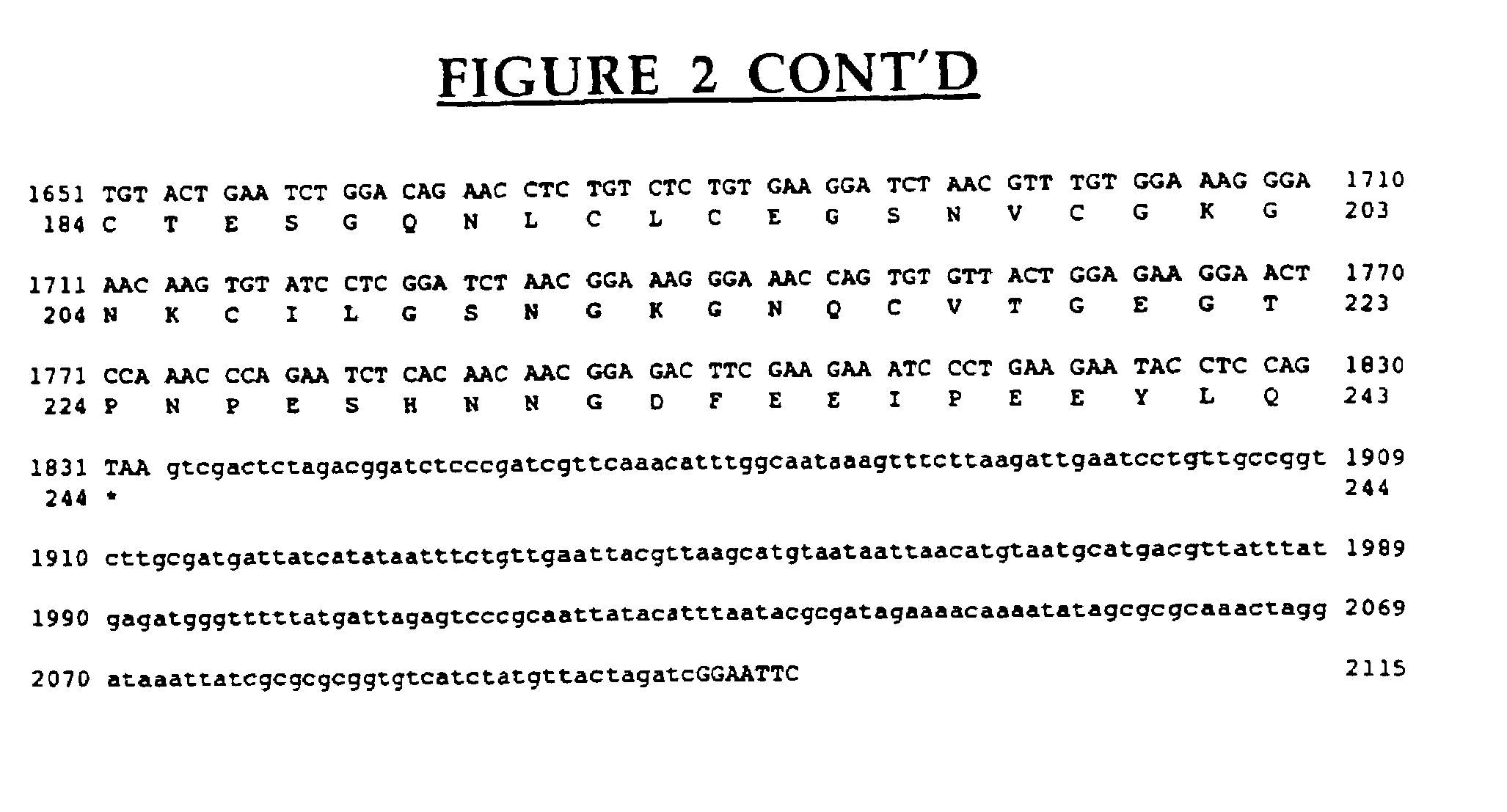Oil bodies and associated proteins as affinity matrices
a technology of affinity matrix and oil body, which is applied in the field of oil body and its associated proteins as affinity matrix, can solve the problems of high cost, high cost, and high cost of large-scale high-separation techniques such as column chromatography or batch-type based protein purification techniques, and achieves easy manipulation and maintenance, increase the affinity of the matrix, and cost-effective
- Summary
- Abstract
- Description
- Claims
- Application Information
AI Technical Summary
Benefits of technology
Problems solved by technology
Method used
Image
Examples
example 1
Purification of Thrombin
[0082]The following example demonstrates the utility of an oil body affinity matrix for the purification of thrombin. Thrombin is a serine protease which plays a central role in blood coagulation. It cleaves fibrinogen to produce fibrin monomers which polymerize to form the basis of a blood clot (Fenton 1981; Ann. N.Y. Acad. Sci. 370: 468-495). Alfa-thrombin consists of two polypeptide chains of 36 (A-chain) and 259 (B-chain) residues linked by a disulphide bridge. Degen et al. 1983; Biochemistry 22: 2087-2097). Hirudin, which is found in the salivary glands of the medicinal leech Hirudo medicinalis, is a very specific and potent inhibitor of thrombin. This inhibition is a result of the non-covalent binding of hirudin to specific parts of the alfa-thrombin chain. (Stone and Hofsteenge 1986; Biochemistry 25: 4622-4628).
[0083]The immobilized ligand is comprised of an isoform of hirudin fused to the 18 kDa Arabidopsis oleosin (oil body protein) (Van Rooijen et a...
example 2
Use of Antibodies as Bivalent Ligands
[0091]Antibodies may be used as bivalent ligands by virtue of their affinity both for specific epitopes and for other antibodies or proteins (for example the Staphylococcus aureus protein A) which have affinity for immunoglobulins (IgGs). In this example, polyclonal anti-oleosin antibodies serve as a bivalent ligand and antibodies raised in rabbits against the anti-oleosin antibodies serve as the target. This example is illustrated schematically in FIG. 6.
[0092]Oil bodies were prepared from 5 g of wild type Brassica napus cv Westar seeds following the procedure described in Example 1. Subsequently, oil bodies were washed twice with 100 mM glycine (pH 2.5), neutralized through two washes in binding buffer (50 mM Tris-HCl, pH 7.5) and resuspended in 5 ml of binding buffer. A 150 μl aliquot of the washed oil body preparation was combined with 500 μl of rabbit serum containing anti-oleosin antibodies (ligand antibodies), diluted 1:10 with binding buf...
example 3
Use of Oleosin-Specific Ligands
[0093]The use of an oleosin-specific ligand represents an alternative to the use of an antibody or genetically-engineered oleosin fusion proteins for the purification of recombinant target proteins. In this case, the target protein is fused to the oleosin-specific ligand and the endogenous oleosins present on the oil bodies of non-transgenic seeds serve as the complementary ligand-affinity matrix. In addition to eliminating the requirement for a transgenic line expressing an oleosin fusion, this approach increases the overall capacity of the affinity matrix, since all of the endogenous oleosins may now participate in binding.
[0094]Oleosin-specific ligands may be identified and isolated from a peptide phage display library screened with oleosin protein. Since the extreme hydrophobicity of the oleosin central domain can result in aggregation and precipitation of the protein when removed from oil bodies, a mutant protein lacking this domain may be used fo...
PUM
| Property | Measurement | Unit |
|---|---|---|
| size | aaaaa | aaaaa |
| pore size | aaaaa | aaaaa |
| pH | aaaaa | aaaaa |
Abstract
Description
Claims
Application Information
 Login to View More
Login to View More - R&D
- Intellectual Property
- Life Sciences
- Materials
- Tech Scout
- Unparalleled Data Quality
- Higher Quality Content
- 60% Fewer Hallucinations
Browse by: Latest US Patents, China's latest patents, Technical Efficacy Thesaurus, Application Domain, Technology Topic, Popular Technical Reports.
© 2025 PatSnap. All rights reserved.Legal|Privacy policy|Modern Slavery Act Transparency Statement|Sitemap|About US| Contact US: help@patsnap.com



